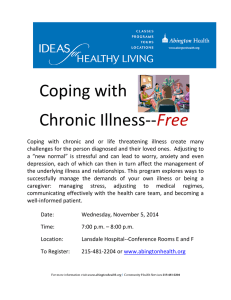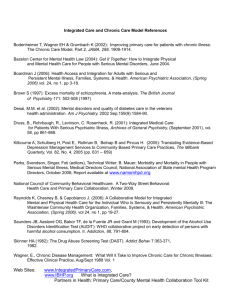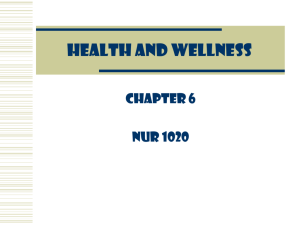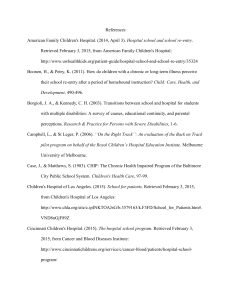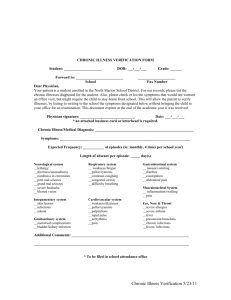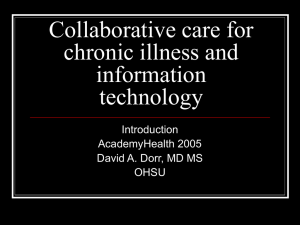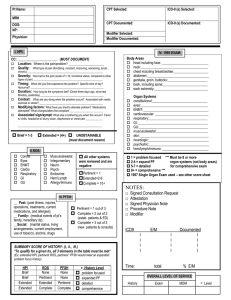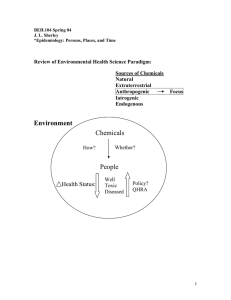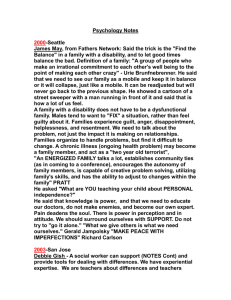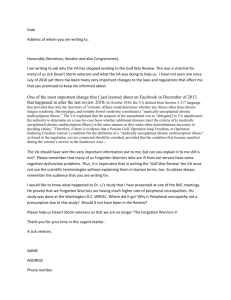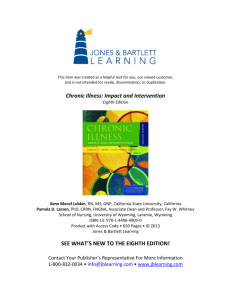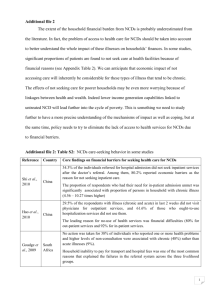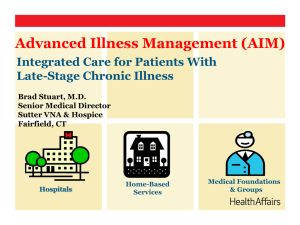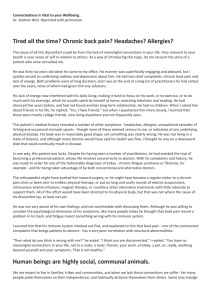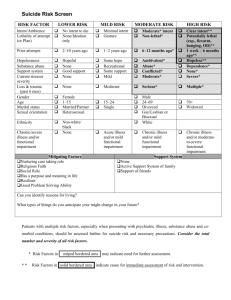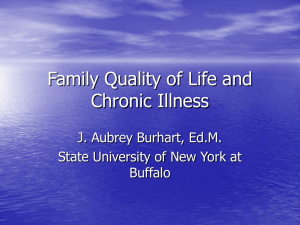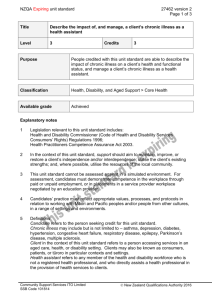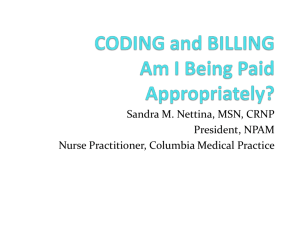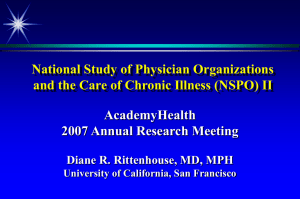Chronic Illness PowerPoint Slides
advertisement
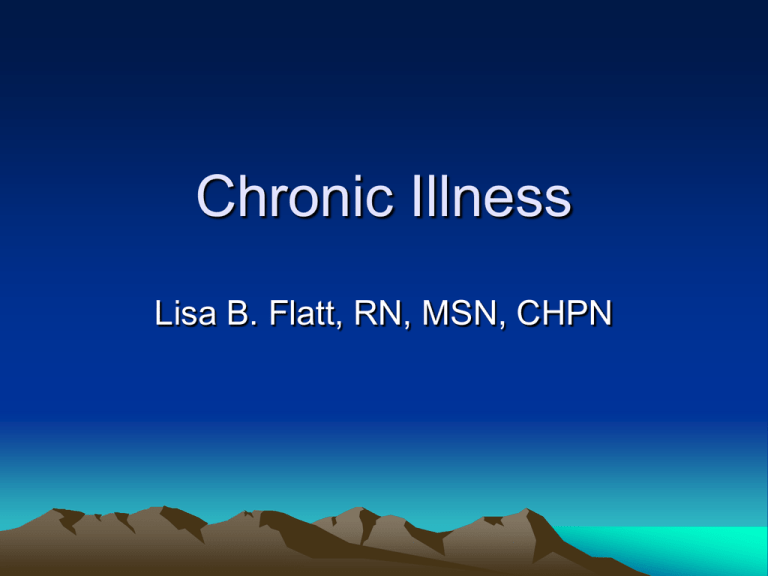
Chronic Illness Lisa B. Flatt, RN, MSN, CHPN Chronic Illness • Chronicity – last indefinitely • Medical care – treating symptoms vs. curing Models • Chronic Illness Trajectory Model – – – – – – – – – Pretrajectory phase – wellness Trajectory phase – onset of symptoms Stable phase – start treatment Unstable phase – changes in treatment/decrease in improvement or management Acute phase – Sick hospital Crisis phase – life-threatening Comeback phase – get a little better Downward phase – moving towards death Dying phase – actively dying Chronic vs. Acute • Chronic – lasting • Acute – short term with end in sight Adjustment Patterns • • • • • Kubler Ross – stages -- LOOK IT UP Change lifestyle Change location/environment Acceptance of limitations Modifications Disability • • • • • Limitations Face discrimination Limitations at home and work ADA of 1990 protection Deal with environmental conditions that we don’t think about - curbs Chronic Illness Issues • Self-care – ADL assistance • Deterioration of Health – progressively grow worse – ie. COPD • Quality of life – decreases, increased problems – such as financial, depression • Caregiver Dimension – family steps in – if there is one – dramatic changes in family life and dynamics Factors Influencing Adjustment • Gender roles – caregiver is male or female • Age – is there a spouse/SO still there, adult children • Age – ability to continue with their disability • Preferences – who they want to help – relationship with their HCP’s • Spiritual/religious/cultural beliefs • Support • Physical condition at start • Role insufficiency- loss of job, changes Assumptions • People want to return to their previous state • Intrarole conflict – inability of client to meet new demands of new role • Interrole conflict – cannot perform expected or previous role • Hiding symptoms are normal • “Want to pass” And more… • Culture – Chinese (oldest male cares for parents) Middle Eastern – women caregivers hard to be sick and step down Different rituals • Some cultures remove from society • Different interpretations of quality of life • Response to chronic illness and why you became ill in the first place And more…. • Socioeconomic factors – Unemployment – Cost – Health insurance or lack of – Food and healthy eating And more…. • Environmental factors – Structural – Transportation – Occupational hazards – Safety issues – Patient safety needed equipment/lifts Psychological • • • • • • • • Depression Anger Isolative Stigma to be ill Dependence Clingy Want to be normal Learned helplessness Review… • Alternative and complementary therapies • Right to Health Care • ??What kind of and how good is it??? Model of Chronic Illness • 133 million Americans have a chronic illness • This number will increase 1% a year until 2030 • CDC – CV disease, cancer, diabetes • Medicare/medicaid/private insurance/HMO • Ethical and legal implications – Patient advocate Developmental Disabilties Acts • 1975 – mental disorders • 1980- advocacy program • OBRA (omnibus reconciliation act) 1990 – right to refuse treatment • PSDA (patient self determination act) 1991 – inform of rights and have signed papers • Advanced and DNR Nursing Process • Assessment – adl’s; advocacy; ethical and legal aspect • Analysis – collaboration, establish diagnosis and goals • Planning – plan short term realistic goals for illness “caregiver will state plan for respite” • Implementation – intervene for person, simple measures • Evaluation – effectiveness of interventions determine further needs
